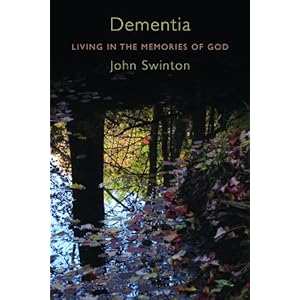 When I said I was reading this book slowly, I meant patiently, taking time to let a different voice say new things, or familiar things in new ways. I wasn't aware it would be read slowly, a page or two at a time, lying in hospital, with time to think between each reading, a miasmic doze, and the next couple of pages. Not sure anyone sucks lozenges nowadays – the word lozenge seems to refer now to a medically laced sweet from a bygone age. But as a sweet to be sucked rather than crunched, slowly ingested rather than consumed, enjoyed for lasting taste rather than eaten for short term satisfaction, the metaphor still works. This book is a lozenge type read.
When I said I was reading this book slowly, I meant patiently, taking time to let a different voice say new things, or familiar things in new ways. I wasn't aware it would be read slowly, a page or two at a time, lying in hospital, with time to think between each reading, a miasmic doze, and the next couple of pages. Not sure anyone sucks lozenges nowadays – the word lozenge seems to refer now to a medically laced sweet from a bygone age. But as a sweet to be sucked rather than crunched, slowly ingested rather than consumed, enjoyed for lasting taste rather than eaten for short term satisfaction, the metaphor still works. This book is a lozenge type read.
The cliche graffiti story, "Jesus is the Answer" to which someone allegedly wrote below "What is the Question", may in the end be mere baseless anecdote at best; at worst, a preacher's invention. But Halik pushes the point and arrives at a different intellectual level. Quoting the philosopher Eric Voegelin, Halik asks whether the biggest problem for Christians today is not that they don't have the right answers, but that they've forgotten the questions to which they were the answers. Then Halik continues:
Answers without questions – without the question that originally provoked them, but also without the subsequent questions that are provoked by every answer – are like trees without roots. But how often are Christian truths presented to us like felled, lifeless trees in which birds can no longer find a nest?
 There in a couple of sentences is the diagnosis of the church's contemporary malaise and missional confusion. We talk dialogue and practice assertion. We claim to present, embody, live by, know, the truth, but to put it in the words of that most unmetaphysical of movie characters, Jack Nicholson, "Son, you can't handle the truth!" Because the truth is bigger than our capacity; the truth is stranger than our conceptual field can contain; the truth is never our possession always our gift, and never entirely given. And whatever else I make of the Colossian Christ, the Johannine Logos, the Hebrews "God's last word" claim about Jesus Christ, whatever else I make of the NT claims to apostolic testimony to the truth, it never was that the church can simply take truth for granted. We don't possess it, it possesses us; we don't control it, truth compels and constrains us.
There in a couple of sentences is the diagnosis of the church's contemporary malaise and missional confusion. We talk dialogue and practice assertion. We claim to present, embody, live by, know, the truth, but to put it in the words of that most unmetaphysical of movie characters, Jack Nicholson, "Son, you can't handle the truth!" Because the truth is bigger than our capacity; the truth is stranger than our conceptual field can contain; the truth is never our possession always our gift, and never entirely given. And whatever else I make of the Colossian Christ, the Johannine Logos, the Hebrews "God's last word" claim about Jesus Christ, whatever else I make of the NT claims to apostolic testimony to the truth, it never was that the church can simply take truth for granted. We don't possess it, it possesses us; we don't control it, truth compels and constrains us.
And while Halik can push too far his hesitations about just how much truth can be understood, held to, made the base convictions of life, he is absolutely right in his image of felled lifeless trees, truths nobody cares about any more; truths that don't shelter; truths that have lost the sap of life. And therefore truths cut off in the deforestation of a landscape that should include mystery, miracle, question, search, enquiry, discovery, newness, oldness, longing and finding, losing and recovering, sunlight and shadow, the colour and tone of life rather than the settled leafless skeletal greyness of what used to be a magnificent rain forest, a life-giving canopy under which human life is explored in the mystery and history of a God loved world.
And yes that is idyllic, and a bit overblown. But I do sense in our cultural landscape that deforestation of religious ideas is well underway, a land-stripping of those vast questions that have always fascinated and terrified, opened us up in mind and heart, to a universe at once alien and home. Which brings me back to the New Testament. Because I happen to believe its outrageous claim that in Jesus Christ the universe co-inheres, all things hold together. That in Jesus Christ, the Lamb Slain from the foundation of the world, the Word uttered by the Father, the Life that Lightens every human being, the heart of God is revealed. And the mind of God is glimpsed – not captured, not contained, not comprehended – but we have beheld his glory, full of grace and truth. And when it comes to beholding glory we can only glimpse - because to gaze would be blindness.
Here's Halik again
It takes the confrontation of questions and answers to return a real meaning and dynamic to our statements. Truth happens in the course of dialogue. There is always a temptation to allow our answers to bring to an end a process of searching, as if the topic of the conversation was a problem that has now been solved. But when a fresh question arrives, the unexhausted depths of mystery show through once more. let it be said over and over again; faith is not a question of problems but of mystery, so we must never abandon the path of seeking and asking.
 I think Halik is, quite simply, right. And I wish the church was able to recover the intellectual humility to recognise that what is now needed is a reforestation of the cultural landscape, a church with a sense of the greatness of God's humility, a church unembarrassed by the vastness of the truth of who God is in Christ. And a church lost in wonder at a Love way beyond our mere intellectual constructs, but purposefully present and deeply entangled within those profound and mysterious depths of human brokenness and aspiration that define us as human beings, made in the image of God.
I think Halik is, quite simply, right. And I wish the church was able to recover the intellectual humility to recognise that what is now needed is a reforestation of the cultural landscape, a church with a sense of the greatness of God's humility, a church unembarrassed by the vastness of the truth of who God is in Christ. And a church lost in wonder at a Love way beyond our mere intellectual constructs, but purposefully present and deeply entangled within those profound and mysterious depths of human brokenness and aspiration that define us as human beings, made in the image of God.

 Dementia: Living in the Memories of God, John Swinton. (Grand Rapids: Eerdmans, 2012) £16.99
Dementia: Living in the Memories of God, John Swinton. (Grand Rapids: Eerdmans, 2012) £16.99